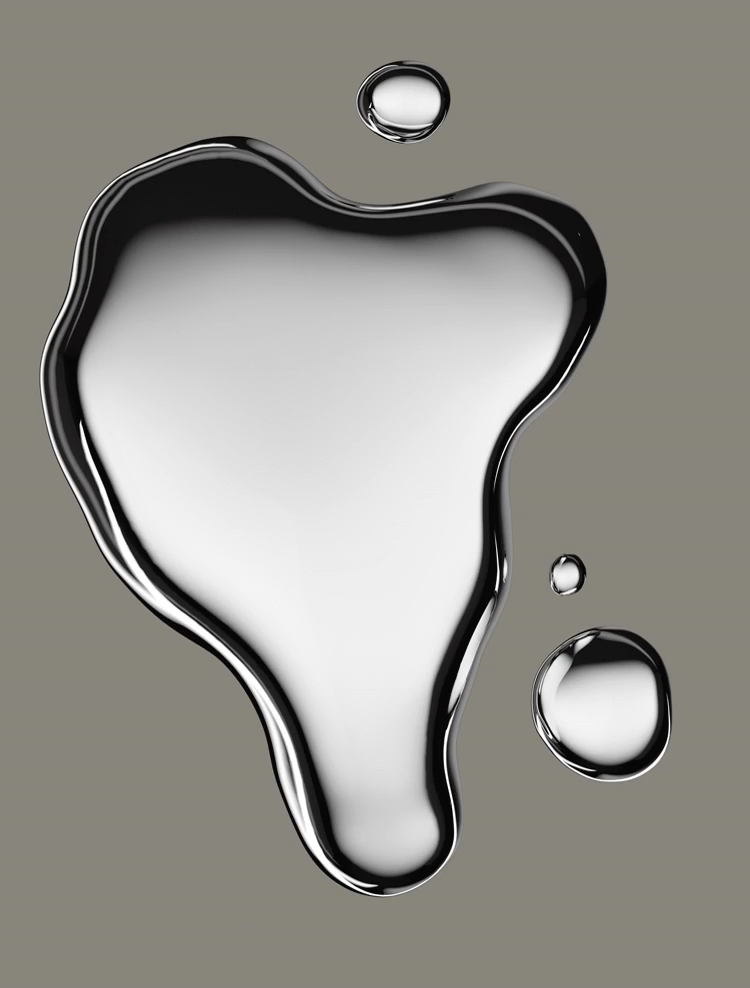THE SCIENCE OF HYDRATION
Healthy-looking skin largely depends on maintaining optimal moisture levels, making it crucial to keep your skin well-hydrated. However, it’s not as simple as ensuring your skin has enough water; there's much more happening beneath the surface. Let's explore the science of hydration, how to recognise the signs of dehydration, and how to select the best ingredients and products for your skin.
A HYDRATION LESSON
Hydration is essential for the skin's healthy function. When the skin lacks water, it disrupts many processes that keep it smooth, plump, and protected. The skin relies on a protective barrier, known as the skin barrier, to retain water and shield against harmful external elements. This barrier is composed of natural molecules that are both water-loving and oil-loving, working together to maintain optimal hydration levels.
Water-loving molecules, known as humectants, are often described as little water magnets. However, they don't actually draw water from other parts of the body. Instead, they act more like sticky tape, with water molecules bonding to them as they pass by, helping to retain moisture in the skin. Examples of humectants include amino acids, urea, and sodium lactate. These are complemented by oil-loving molecules, called lipids, which help trap water within the skin and prevent it from escaping. Ceramides, fatty acids, and cholesterol are all types of skin lipids that, along with humectants, form the skin barrier: humectants hydrate the skin, while lipids provide moisture.
IDENTIFYING HYDRATION NEEDS
As we've learned, hydration is essential for a healthy-looking complexion, making it a key factor to consider when developing your skincare routine. A common sign of dehydration in the skin is a tight, uncomfortable sensation. If dehydration persists, it can disrupt the skin renewal process, leading to dryness, flakiness, uneven texture, and a dull appearance. Dehydrated skin is also more susceptible to irritation and redness.
While it's widely known that dry skin and dry areas in combination skin can be dehydrated, this issue isn't limited to these skin types—oily skin can also suffer from dehydration. In fact, research indicates that oily skin often has lower hydration levels compared to dry, normal, or combination skin. Therefore, it's crucial to incorporate hydration into your skincare routine, no matter your skin type.
INGREDIENTS THAT TARGET SKIN HYDRATION
Now that we understand the basics of hydration, let’s explore some key hydrating ingredients to look for in your skincare products.
Hyaluronic Acid
This naturally occurring molecule in the skin helps attract and retain water. It easily binds with moisture, making it perfect for hydrating and plumping the skin. Available in various molecular sizes, it effectively delivers hydration to multiple layers of the skin’s surface.
Pro-Vitamin B5
Also known as panthenol, this ingredient is a humectant that helps support various aspects of skin hydration. Due to its water-attracting properties, it can draw in and retain moisture while also promoting the formation of essential barrier components like ceramides and fatty acids.
Ceramides
These naturally occurring molecules are found in the upper layers of the skin and account for about 50% of the skin’s lipids. They help create structures that trap water and minimize moisture loss. When combined with humectants, ceramides work effectively to keep the skin hydrated.
Natural Moisturizing Factors
This term refers to a group of molecules present in the surface layers of the skin, including urea, amino acids, and PCA. These types of NMF act as humectants, attracting and retaining moisture within the skin.
Now that we've explored everything you need to know about hydration, you're equipped to be your own skincare expert and discover what works best for you! Hydration is essential for all skin types, so be on the lookout for signs of dehydration and dryness. Choose the appropriate ingredients and products to tailor your routine to meet your skin’s specific needs.

